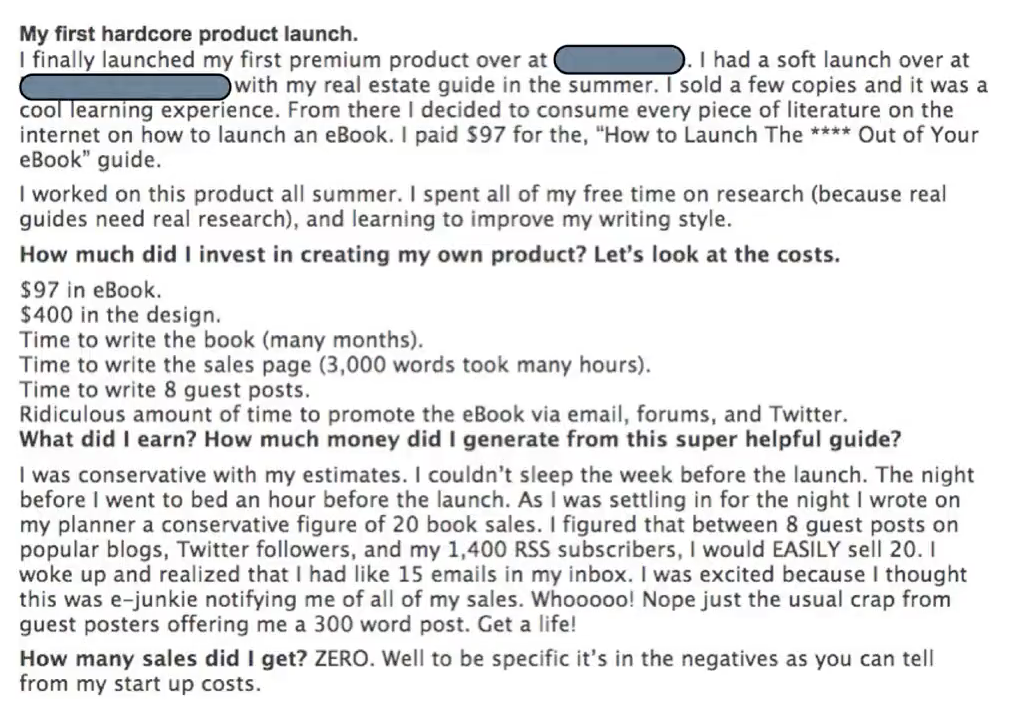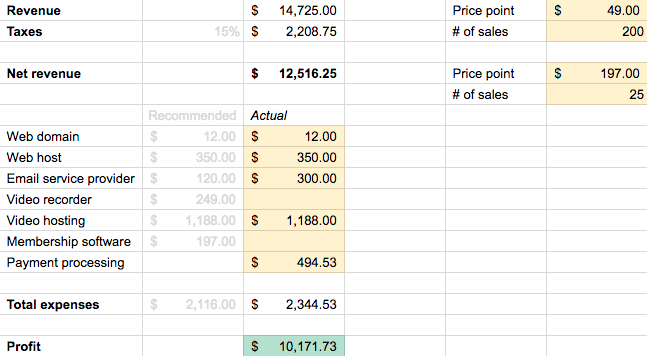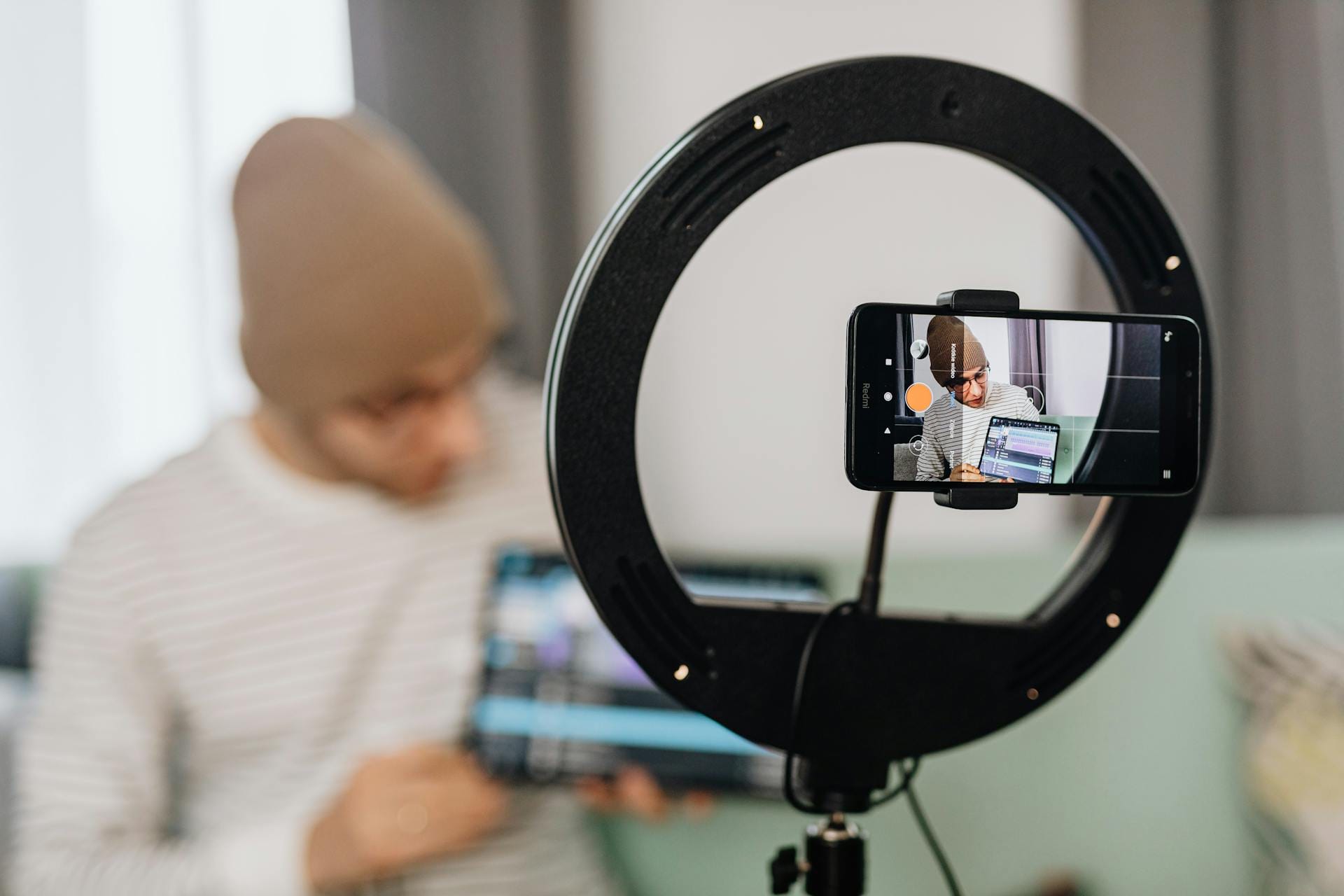
The guesswork-free expense budget for starting an online business
When you’re creating an expense budget for your online business, there are two questions that you’re trying to answer:
- How much money should I spend?
- What should I spend that money on?
At GrowthLab, we’ve taken the guesswork out of expense budgeting for thousands of beginner entrepreneurs. So let me answer these questions upfront:
How much should you spend? Less than you think. If you follow our process, you can get your business started for as little as $100. Even better, you won’t actually spend a dime until you’re confidentthat your business will earn you money in return.
What should you spend the money on? On the things that actually move the needle for your business. During the early stages of building your business, there are two areas and two areas only where you should be spending your attention and your money: growing your audience and creating and selling your product.(We’ll get to the exact tools you need for both areas in a minute.)
In this post, I’m going to show you the three steps to creating an expense budget for a business that sells online video courses.
We’ll also look at an example of what the expenses for an online business might look like as it goes from an idea to a full-fledged business with products and customers and revenue.
(Want an editable budget worksheet so you can start working with the numbers yourself? You can access one on Google Drive here.)
Step 1: Confirm there’s a demand BEFORE you start spending money
Here’s a situation we’ve seen far too many times with beginning entrepreneurs. They have an idea for a business. They jump straight into building out their website and creating their first product, complete with all the bells and whistles: Custom web and graphic design! Professional headshots! Super-fancy video equipment!
Just like that, they’ve racked up several thousand dollars in expenses — and they’ve yet to confirm that people even wantwhat they have to sell in the first place.
And too often, what they realize is that people don’t want it. Case in point — this post by a disappointed entrepreneur:
We won’t let this happen to you. Because before you spend a single dollar on building your business, you’re going to do the work upfront to make sure you understand who your audience is, what they actually need, and what you can create for them that they’ll be willing and able to buy.
Here at GrowthLab, we call this process Immersion.By investing time, immersing yourself in your topic, and getting to deeply know who your would-be customers are and what they want, you make sure that you’re building the right business for the right people — before you ever spend a dime of your money to do it.
A few examples of tactics you might use during Immersion to make sure you understand exactly who your audience is and what they want:
- Search keywords related to your topic on Google. Take note of the top-ranking sites and articles related to your topic to get a feel for how the topic is being covered now, and what you might add to the conversation.
- Browse products and books on Amazon. Looking up books and products on an e-commerce site like Amazon is a great way to get a sense for what people are already spending money on when it comes to your topic. Plus, if you read through the comments, you can get a good sense for what they like about those products, and what they like less — useful ammo once it’s time to build a product of your own.
- Check out Q&A sites. Forums like Reddit and Quora are goldmines for getting an idea of the kinds of questions people are asking related to your topic.
- Talk to people. This is the final piece of the Immersion puzzle: talking to real people who might be customers for your business and finding out: do they care about your idea, and is this something that they’d be willing and able to pay for?
Want to build a business that enables you to live YOUR Rich Life? Get my FREE guide on finding your first profitable idea.
Step 2: Identify the expenses that will help you grow your business
As we mentioned up top, there are two main areas where you’ll want to focus your expenses:
- Growing your audience, because before people can buy your product, they need to know about it.
- Creating & selling your products, because in order to make money, you have to have something to sell.
You can see how some expenses you might think you need to get started don’t have a place in this framework:
- Does office space help you grow your audience? No? Then skip it, and work on your business from home.
- Do you need expensive professional graphic design on your website to sell your product, or would a simple, inexpensive website theme that you can buy online for $10-$50 work just as well?
Here’s a rundown of the expenses that we at GrowthLab recommend entrepreneurs start with if they’re building a business that sells online courses. (For a more detailed explanation of what each of these tools does and some options you can explore for each one, check out our post on startup costs.)
Growing your audience
- Web domain: $12 per year
- Web host: $350 per year
- Email service provider: ~$120 per year (depending on the size of your audience)
Creating and selling your products
- Video recorder: $249 (one-time purchase)
- Video hosting: $99/month
- Membership software: $197 (one-time purchase)
- Payment processing tool: 2.9% + $0.30 per transaction
An important thing to note: you won’t actually pay for all of these tools at once.The best way to make sure you’re keeping your expense budget as efficient as possible is to pay for only the tools you need as you need them.
Which brings us to Step 3…
Step 3: As your business grows, grow your expenses with it
Talking about numbers in the abstract can get confusing fast, so for the rest of this post, we’re going to look at what the expenses might look like for an actual online business that sells video courses.
Let’s say you have an idea for an online business called Miniature Mastery, which teaches people how to paint professional-looking miniatures for tabletop games like Dungeons & Dragons.
You’ve done the Immersion work: you’ve spent some time poking around the relevant subs on Reddit, reading reviews of books on the topic on Amazon, and Googled relevant keywords.
Finally, you’ve talked to a few dozen people in your target audience who have told you YES, they want to get better at painting miniatures, and YES, they would be willing to pay for a solution that makes that happen.
You’ve gotten a solid sense of what the market needs — and how you can meet those needs. Now, you’re ready to start investing in the system that will let you do that.
Year 1: Growing an audience
You decide that the first year of Miniature Mastery is going to be all about growing your audience and establishing yourself as an authority on the topic of painting amazing looking miniatures.
The first thing you do is set up a website with a blog, so you can start posting useful content that helps your audience, free of charge (this is important for building trust and letting your audience know that you know your stuff — all of which helps when you’re ready to sell a product).
You also integrate a sign-up form to join your email list through your email service provider, Mailchimp, so visitors to your site have the option to subscribe and get emails from you sent straight to their inbox.
And sure enough, as you start writing blog posts and dishing out useful content, people start signing up. Your email list grows to 100, then 500, then 1,000.
For now, you decide to stick with Mailchimp’s free option, which lets you send up to 12,000 emails per month to up to 2,000 subscribers.
Here’s a quick look at what your expense budget looks like so far:
You’re not earning money yet. But that’s okay, because your list is growing, you’re getting enthusiastic responses from readers telling you that they love your content and it’s really helping them improve their painting skills — all of which gives you the confidence you need to progress to the next stage: creating and selling your first product.
Ready to improve your habits and level up your life? Download our FREE Ultimate Guide To Habits below.
Year 2: Creating & selling a product
Things are going well for Miniature Mastery rolling into Year 2. Your email list has passed the 1,000 subscriber mark, and you decide to upgrade to the $20/month plan on Mailchimp so you don’t have to worry about the pesky limits on how many emails you can send.
Most excitingly of all, though, you’ve decided you’re ready to create your first product. Over the course of a year of steady blogging, both on your own website and on popular blogs that you know your audience reads (thanks to the Immersion research you did up front), you’ve built up a huge library of content on a wide variety of topics related to your core topic of miniature painting.
For your first product, you decide to package your best, most essential content on the topic you know is particularly painful for your audience: getting started. You decide to create a miniature online course calledMini Painting for Beginners, and you price it at $49.
Now that you’re creating a product, there are a couple of expenses you’re going to need to add to our budget:
- Video recording software. This is what you use to actually create the course.
- A video hosting platform. This is where you host the videos for your course.
Once your course content is created, the last piece of the puzzle is making it available for people to buy — and there are a few expenses that come with that as well:
- Membership software that lets you put the course behind a paywall, so visitors have to buy the course and get login credentials in order to view it.
- A payment processing tool, like PayPal or Stripe, that lets you collect credit card payments directly through your website.
With your sales machine in place, Miniature Mastery is officially open for business. You add a sales page to your website outlining the course and what it offers, and send a series of emails to your audience of subscribers letting them know that Mini Painting for Beginners is finished and ready for them to buy. And what do you know? Some of them do!
Here’s what your expense budget looks like now:
Hey, look! Profit! By the end of the year, you’ve made 120 sales, giving you $5,000 in revenue and $2,615 in profit after all the expenses are paid.
Not enough to quit your day job and retire to Fiji, but it’s real revenue and real profit that proves you’ve created something of value for people. All of which gives you the confidence you need to move onto the next stage of your business.
Year 3: Expansion
Year 3 is a big one for Miniature Mastery. You land some high-profile guest appearances on YouTube channels that your audience subscribes to, which sends visitors flooding to your website and boosts your subscriber count to over 2,000.
The $49 Mini Painting for Beginners course is selling well — so well, in fact, you decide it’s time to grow your product selection by adding a bigger, meatier course.
You call this course Advanced Mini Mastery. It has 20 hours of video covering all kinds of advanced techniques for painting miniatures. Given how in-depth the course is and how much material is included, you decide to set the price at a loftier $197.
Since you already invested in video recording software and membership software last year, and those are one-time expenses, not recurring ones, you don’t have to factor those expenses into your budget this year.
That means that, even though you’re paying more for email marketing software and payment processing than you did last year, your overall expenses are actually down from last year, leaving you with a cool $10,000+ in profit.
Here’s a look at what Miniature Mastery’s expense budget looks like in Year 3:
You decide to invest some of the $10K profit in buying higher quality video equipment and studio lights so you can improve the quality of the videos in your courses.
The rest you put away for a rainy day, which could come in handy, because based on your growth trajectory, you’re thinking that Year 4 might be the year that you hand in your notice and take the leap into running Miniature Mastery full time…
Money funds your business. Your business funds your life.
When you’re dealing with dollar signs and zeroes, it’s easy to get bogged down in the details and lose sight of the bigger picture of what all of this is actually for.
The money you spend on expenses fuels your business, sure. But it also fuels your ability to build the business and the life that you want to build. And the fun thing is, as your business grows, you get to decide what that looks like.
Do you want to budget for travel so you can attend conferences on your topic and get your name out there? Do you want to hire a dedicated support person to tackle customer questions, freeing up more of your time to focus on creating new products — or just work less? Those are the kinds of big-picture decisions that you get to make when you run your own company.
Money funds your business. Your business funds your life. But before you spend money on getting your business up and running, you need to find an idea that you know will make money. Luckily, we have a resource that will help you do exactly that:
The Ultimate Guide to Profitable Business Ideas
In the guide, we’ll walk you through our proven process to finding a business that your audience will be happy to pay for. Just enter your email below, and we’ll send you the Ultimate Guide to Profitable Business Ideas for free.



